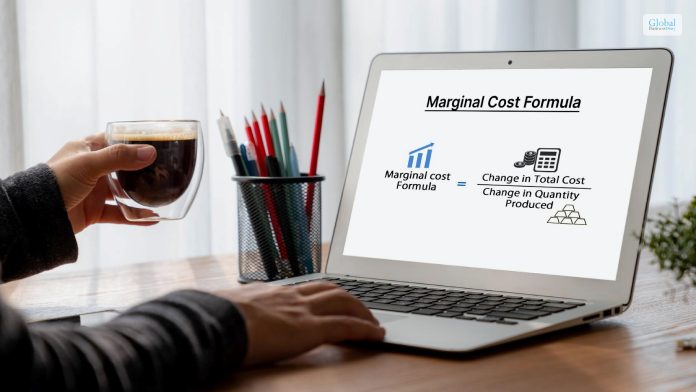Marginal Cost: Definition, Formula, Examples, And More

Every production in a business has a certain level of expected output. However, in most situations, there is always a change in the quantity of the desired output for the business. This results in an increase or decrease in the total production cost. This change in cost is known as marginal cost. This is a term that is used in economics and managerial accounting. It is a variable unit that depends on the inclusion of resources to enhance production or service.
In this article, you will learn about marginal cost and how it works in the world of accounting. Apart from that, we will also share with you how marginal cost works for businesses, especially during the accounting processes, where we will give you the formula to calculate it. Next up, you will learn more about this term with the help of a simple example. Finally, we will discuss the major benefits of marginal cost.
What Is Marginal Cost?

According to Investopedia,
“In economics, the marginal cost is the change in total production cost that comes from making or producing one additional unit. To calculate marginal cost, divide the change in production costs by the change in quantity. The purpose of analyzing marginal cost is to determine at what point an organization can achieve economies of scale to optimize production and overall operations.”
Here, if the marginal cost of the business to produce one more unit is lower than the price of each unit, it gives the business an opportunity to make a profit. The business will be able to maximize its profits to the point where its marginal cost matches its marginal revenue.
Read More: What Is Continuity In Business, And Why Is It Important?
What Is Marginal Cost Formula?

The increase in the total expense that is required to manufacture one additional product is the marginal cost. Hence, you can measure the marginal cost by determining the changes to what expenses are incurred for manufacturing one additional product.
Here is the formula for calculating marginal cost:
| Marginal Cost = Change in Total Costs / Change in the Quantity of Production |
How Does Marginal Cost Work?

According to Wall Street Mojo,
“The marginal costing technique is crucial for any business aiming to optimize the production of goods or delivery of services. The concept technically means extra costs added to the production cost due to additional unit(s). It helps companies determine the selling price of a product or service. Furthermore, they can estimate the desired output by understanding marginal and sales costs.”
Any manufacturing business uses the marginal cost factor to isolate the level of optimum production. Apart from that, manufacturers also examine the cost of adding one more unit to their schedules of production.
There are situations manufacturers face during production where the benefit of producing one more unit and generating revenue from that product will bring down the overall production cost of that product. If the business wants to optimize its costs of manufacturing, it would need to find that point or level as quickly as possible.
The marginal cost in production basically includes all the costs that vary with the change in the production level. Let’s say a company builds a new factory entirely so as to produce more goods. The cost of building the new factory is considered as the marginal cost.
The company that is looking to maximize its profits will try to produce up to a point where the marginal cost of the company is equal to the marginal revenue.
An Example Of The Working Of Marginal Cost
Both fixed costs and variable costs are part of the production. The fixed cost is the one that does not change with an increase in the level of production. Hence, the business spreads out the same value over more outputs as the production increases. On the other hand, the variable cost is the one that changes with the change in the variable output. Hence, when the business produces more units, the variable cost of the production will increase as a result.
You can understand this better with the help of an example:
Let’s consider a company XYZ which makes pencils. Each requires $0.75 of wood and lead. Here, wood and lead are variable costs. The pencil company also has to spend $1000 on fixed costs every month.
If XYZ makes 500 pencils per month, then each pencil takes $2 of fixed costs ($1000/500 pencils). Hence, the total cost per pencil would be $2.75, where $2 is the fixed cost per pencil and $0.75 is the variable cost of one pencil.
Hence, the marginal cost of the company XYZ goes up as a result.
What Are The Benefits Of Marginal Cost?
The following are the major benefits of calculating marginal cost:
- Knowing the marginal cost and marginal revenue of various product lines will allow the company to concentrate resources on products where the difference is higher.
- The business can focus on manufacturing individual units with maximum returns rather than investing in less successful goods.
- The business gets an idea when it is no longer profitable to manufacture additional products.
- It also helps the business to take on additional or customer orders.
However, there are some limitations of marginal costs as well.
According to Indeed.com,
“The limitation of marginal cost is that in real-world examples of the calculation, some costs aren’t easily discernible as fixed or variable, such as overhead costs, which can sometimes be in either category. This can cause some issues with the calculation since variations in how people separate values can change the outcome of the formula.”
Read More: Business Continuity Plan – What Is It, And How Does It Work?
Wrapping Up
You can see from this article that marginal cost is one of the most important terms in accounting. It is the increase or decrease in the total cost of production of the business mainly due to the changes in the quantity of the output that the business desired beforehand. By calculating marginal cost, businesses can optimize their production through economies of scale.
Managers can use marginal cost to make decisions related to resource allocations, optimize production processes, control manufacturing costs, streamline operations, and many more. Do you have anything more to add on how to use marginal cost? Share your thoughts and ideas with us in the comments section below.
Read Also:













